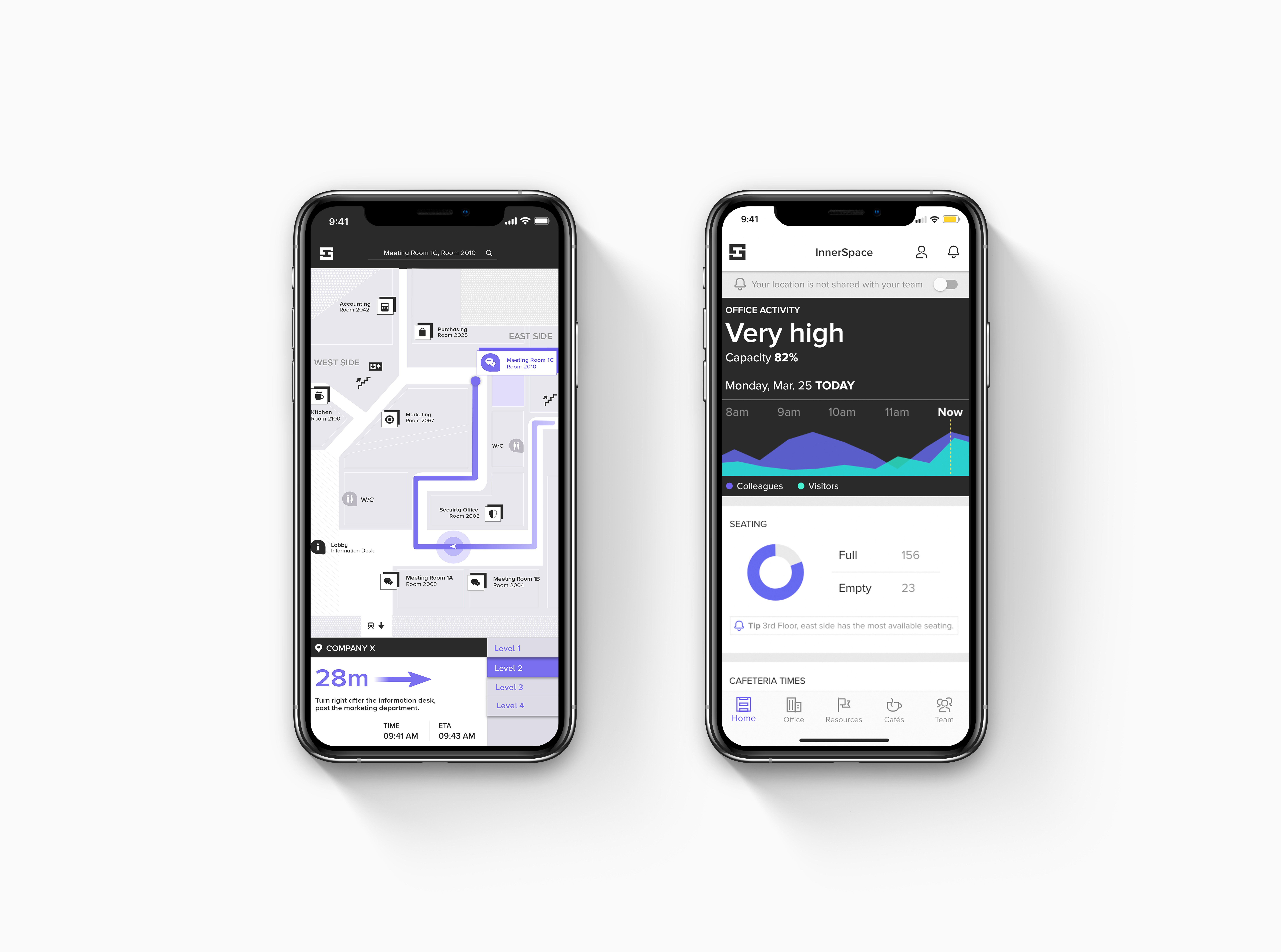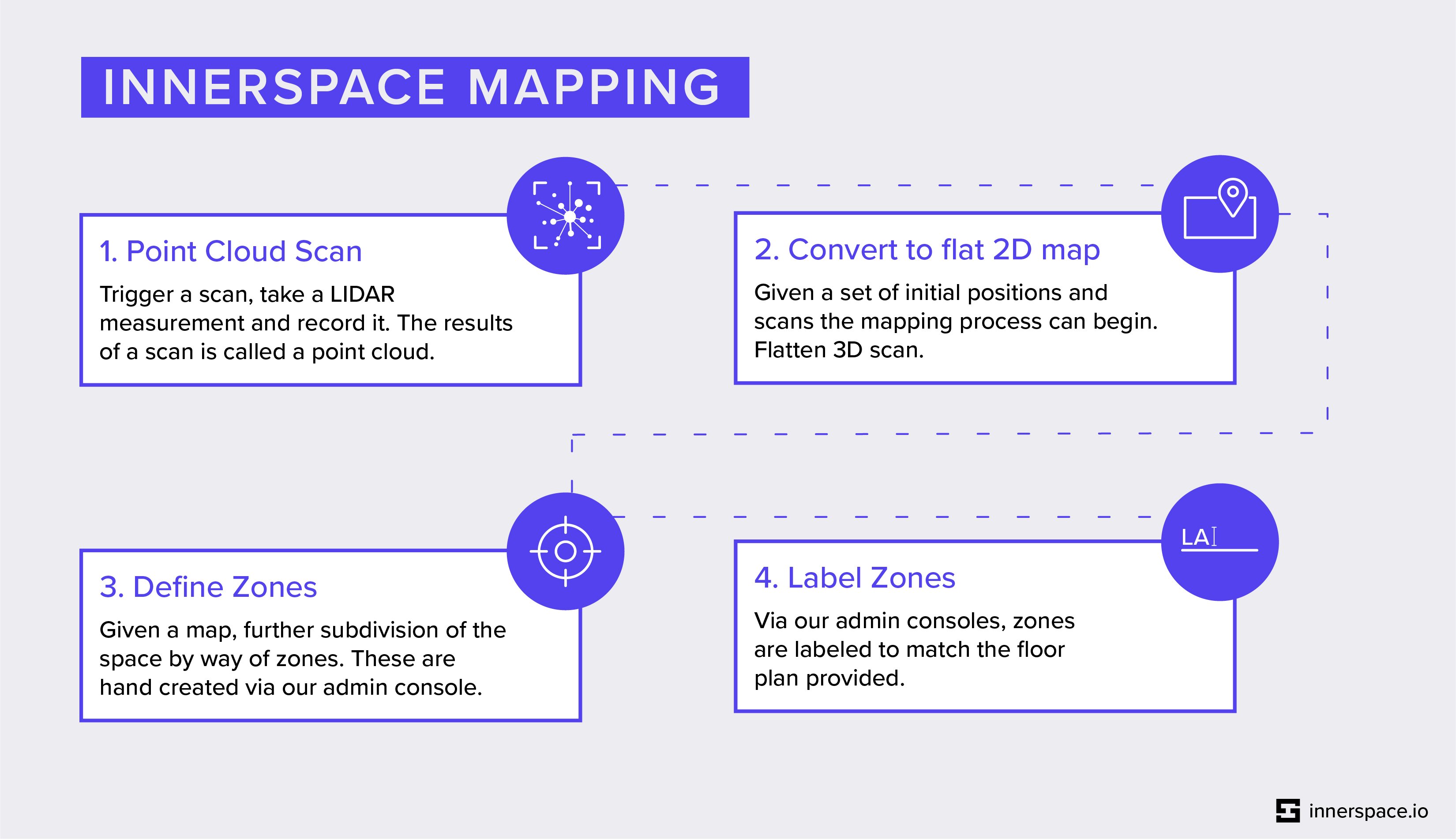Preparing Indoor Location for Rapid Adoption
Tech titans like Google and Apple have made significant investments in mapping and navigation. They’ve taken their expertise in location data and started applying its value to the indoors. And over the last few years a number of startups have emerged to provide insights around indoor location data - primarily in retail. All claiming to have built breakthrough solutions. But yet, indoor data isn’t ubiquitous. Adoption of indoor location to create Smart Buildings remains highly customized and consultative.
Here’s the truth: Indoor location technology is really hard to make autonomous and scalable.
So it’s no surprise that so much time and money is being poured into solving the problem. The indoor location market is estimated to be worth $250 billion. This number reflects the incredible potential of technologies for interior spaces.
It’s not just about maps and navigation. It’s about providing insights into how the buildings are really being used.
With indoor location, the places we live and work will become smarter, more energy efficient, and help positively contribute to our health and wellness. Warehouses will become more efficient. Hospitals will become safer. Retailers will find better ways of engaging with customers. Employees will become more productive. And landlords of commercial office space will optimize their services like never before.
Creating a solution that provides value for decision makers in various sectors—and the general public—is no easy task. Until very recently, all attempts fell short.
Why did indoor maps and location elude developers for so long? In this post we'll look at some persistent indoor challenges—and tell you how we at InnerSpace overcame them.
Unique indoor challenges
To be useful, indoor data must leverage maps that are accurate and up-to-date. The data must be capable of highlighting actionable insights for the building managers and decision makers who use them. And in order to fuel the creation of useful apps, the data must also be easy for developers to make use of.
Creating maps that meet this criteria should be easy. Shouldn’t it? It was 12 years ago that Google Maps was launched, and the service has provided effective outdoor mapping ever since.
But there are unique challenges associated with creating maps that reflect the interiors of buildings. First off, consider physical terrain.
Indoor spaces tend to change. Think removable moving furniture, office renovations when tenants change, event spaces, store locations, gallery displays. When this happens, maps quickly become outdated. And updating them through traditional methods (using blueprints and professional services) can take weeks if not months of costly professional services.
Of course, maps aren’t terribly useful on their own. If your goal is to provide navigation, find efficiency-enhancing insights, or engage those who use your space via their mobile devices, location needs to be part of the mix.
One of the most obvious methods is GPS. You might assume that GPS satellites, which transmit signals from over 20,000 kms away, could locate people and objects indoors. But you’d be wrong. GPS doesn’t penetrate buildings very well.
Then, of course, there are Beacons— movable pieces of hardware that interact with Bluetooth Low Energy (BLE). Both the Apple and Google versions generated buzz when they first appeared. But by most accounts, Beacons are difficult to deploy and maintain as you often need to blanket a space and have a native app installed on someone’s phone to be useful.
Clearly, neither of these technologies are optimal for providing location data indoors at scale. As a result, most decision makers interested in indoor location have had to cobble together solutions, piecing together technology and services from several different vendors. This has made for a time-consuming, expensive, and (ultimately) prohibitive process.
Easy adoption & experiences matter
Let’s think about the big picture. When people think about indoor location technology, they think of Google Maps for the indoors. You might also think of the thousands of apps that use GPS to deliver their experience to their customers - like Uber, DoorDash, Facebook, OpenTable and more.
But we spend 90% of our time indoors. What will it take for us to create the same experience we have outside, inside?
First off, in order to create new apps, developers will need a bank of indoor location data to draw on. For this reason, solutions will need to be capable of storing and updating maps, pinpointing a person’s location, and assigning features and behaviors to the indoor space.
If the technology can deliver immediate and is scalable, businesses, property managers, and operators will be more likely to adopt it. This continued use will result in a bigger bank of high-quality maps and data being generated which then provides rich datasets for developers and other stakeholders to tap into.
Here's an example. Let’s say a facilities manager has been told that their employees need more space and to start sourcing a new building. With indoor location analytics, the facilities manager can uncover that 26.7% of their current building is un-used or under-utilized. By examining how people use meeting rooms and common areas, the facilities manager can change the configuration of two large boardrooms into smaller meeting rooms and add a touch-down space for its sales staff who don’t need assigned desks. At the same time, a mobile app helps employees find resources and improves accessibility for those in need. Employees can make better decisions about when to visit the on-premise Cafe based on their schedule and the expected Wait Times.

Unfortunately, past solutions haven’t always delivered positive experiences. Many solutions have been difficult, cost-prohibitive, and time consuming to set up. Their value has been limited.
At InnerSpace we believe that the future of indoor location hinges on scalability and delivering value to a number of users within the same building.
Bringing the pieces together
It seems there’s no limit to the potential uses for indoor mapping technology. Finding the precise locations of equipment in mega warehouses. Helping fans find their seats in sports stadiums. Deploying staff on an as-needed basis to reduce labor costs. But not just any technology will do.
In this post, we’ve run through some of the major challenges that have prevented companies from perfecting indoor mapping in the past.
There’s the fact that useful maps need to be kept completely up-to-date. There’s also the difficulty of getting maps to work with location technologies—and the fact that the most common location technologies are incomplete on their own.
In addition, a useful solution must produce data that’s both developer-friendly and easy for decision makers to understand. It should be easy to deploy and free of ongoing maintenance difficulties.
That’s a pretty tall order. Which is why, for years, indoor mapping has been a puzzle for technology developers. At InnerSpace, we’re proud to say that we’ve solved it.
Our platform is a turnkey solution that uses plug-n-play IoT sensors to digitize the indoor space - from maps, to location, and positioning. Once connected, the InnerSpace platform immediate generates 3D scans of the space, positioning and location of smart devices within the space, and tracking assets to generate a rich indoor dataset.

Our out-of-the-box analytics dashboards surface critical insights to business operations for Smart Buildings, Smart Office and Smart Cafe clients. And we’ve created engaging solutions to improve the employee and customer experience with Slack integrations, our own Employee Experience mobile app, and integrations with popular building management solutions.
Using the InnerSpace platform, decision makers can quickly access and understand insights related to their indoor spaces. The most exciting part is that developers can tap into the indoor data using our API.
The creativity ahead is unlimited. Together with our customers, we’re delivering "GPS" for the indoors.
Accurate space utilization data through Wi-Fi?
We'll prove it to you.
See why industry leaders leverage InnerSpace to generate valuable insights that go beyond occupancy.

